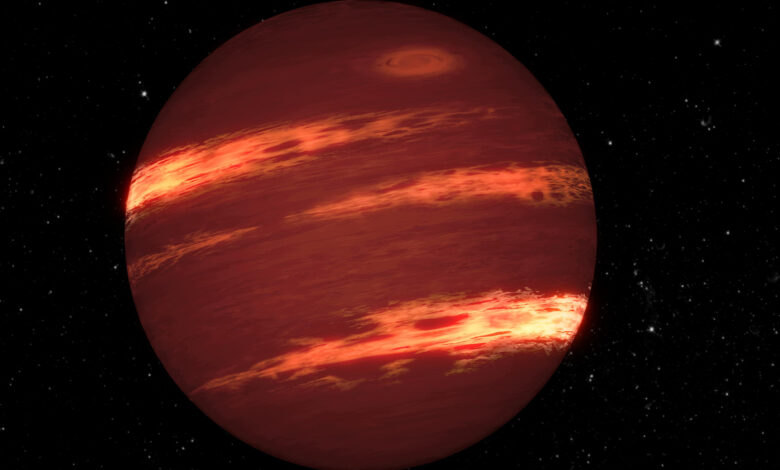
Dark matter-fueled brown dwarfs may be lurking in the centers of galaxies. If astronomers can observe these stars, they can understand how dark matter interacts with normal matter.
Brown dwarfs are giant balls of gas with a mass between 13 and 72 times that of Jupiter, but they are smaller than stars and do not have enough material to fuse hydrogen in their cores. The threshold at which a mass can start hydrogen fusion and become a star is called the hydrogen fusion limit and is about 0.075 times the mass of the Sun.
Jonah Crone of the UK’s Durham University and colleagues have now found that if brown dwarfs host dark matter and release energy by destroying it, the hydrogen fusion limit could be higher. According to Kron and his team’s calculations, this extra energy could cause the brown dwarf to expand and cool it slightly; So we need a bigger brown dwarf to reach the temperatures needed to start hydrogen fusion.
To calculate the characteristics of brown dwarfs that host dark matter, also called dark dwarfs, the researchers achieved an equation that relates the internal pressure of the dark dwarf to its energy level. Based on this equation, it is possible to calculate the key characteristics of these objects, such as size and temperature, and their changes over time, and compare them with ordinary brown dwarfs, which do not have the additional energy of dark matter.
Unlike normal dwarfs, which cool down over time and are not bright enough, dark dwarfs can maintain their brightness for a relatively long time. It is also possible that these objects can be detected by increasing the level of lithium; Because dark dwarfs are slightly cooler than brown dwarfs, they cannot burn as much lithium as their non-dark matter counterparts. If astronomers observe a population of brown dwarfs with these characteristics, statistical analysis can show whether these objects are enriched by dark matter.
It is exciting to note the objective works for the observation of dark dwarfs. New instruments such as NASA’s James Webb Space Telescope and the upcoming Nancy Grace Roman Telescope could detect traces of lithium enhancement. According to Crone, it is not clear exactly where such brown dwarfs can be discovered; But these objects require a relatively high concentration of dark matter, a feature that appears to be found only near the galactic center.
If we detect dark dwarfs, then we can tell how much dark matter interacts with normal matter. However, even then, nothing can be understood about the mass of dark matter particles; Because this material is unaffected in the equations used by researchers.









